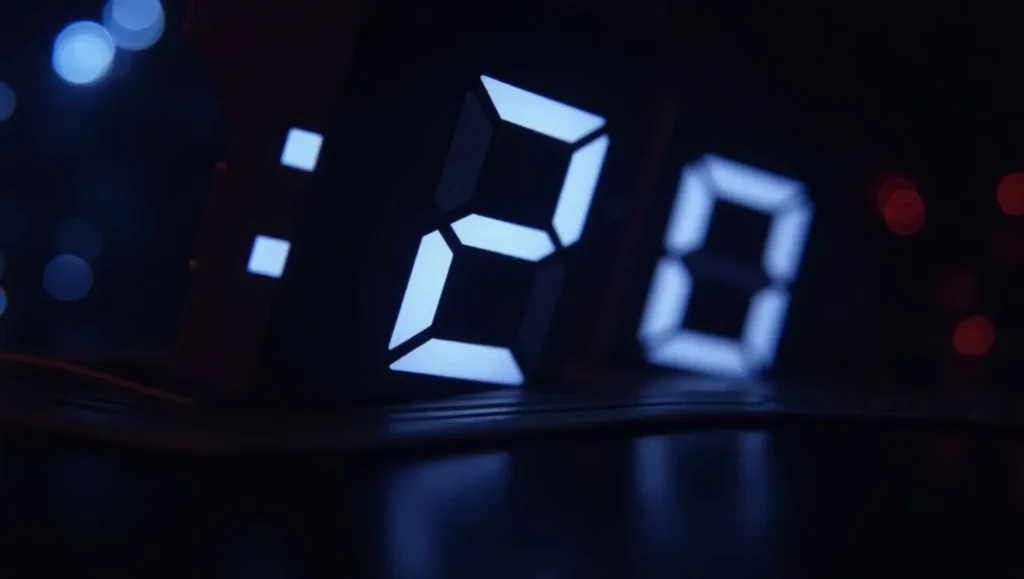Introduction
Welcome to denzidesign.com. Digital clocks have become an integral part of our daily lives, helping us keep track of time with precision and ease. Unlike traditional analog clocks that use hands to indicate hours and minutes, digital clocks display time in numerical format, making them easier to read at a glance. But have you ever wondered how these clocks actually form numbers, particularly the number?
The way digital clocks display numbers is based on seven-segment displays, a simple yet ingenious system that converts electrical signals into recognizable digits. Each digit on a digital clock is formed by illuminating specific segments within a rectangular grid. This process might seem straightforward, but it involves precise electronic circuits, microcontrollers, and oscillators to ensure accurate timekeeping and proper digit formation.
In this blog, we will explore how digital clocks work, how they generate the number 2, and answer common questions about digital timekeeping. Whether you are curious about digital clock mechanisms, the role of quartz oscillators, or the differences between 12-hour and 24-hour formats, this guide will provide you with clear and in-depth insights into the world of digital timekeeping.
How Do Digital Clocks Display Numbers?
Digital clocks use a seven-segment display to represent numbers. Each digit is made up of seven individual segments that can be turned on or off to form numbers. These segments are labeled from A to G, arranged in an 8-like shape.
Seven-Segment Display Breakdown:
--- (A)
| | (F) (B)
--- (G)
| | (E) (C)
--- (D)To display the number 2, a digital clock activates the following segments:
- A (Top horizontal)
- B (Top-right vertical)
- G (Middle horizontal)
- E (Bottom-left vertical)
- D (Bottom horizontal)
This creates the recognizable shape of the number 2.

How Do Digital Clocks Know How Long a Second Is?
Digital clocks rely on quartz crystal oscillators to maintain accurate time. These oscillators vibrate at a precise frequency when an electric current passes through them. The most common frequency used in digital clocks is 32,768 Hz.
Steps in timekeeping:
- The oscillator vibrates at a fixed frequency.
- The clock’s circuit counts these vibrations and converts them into seconds.
- The seconds are then displayed using a digital format.
The accuracy of a digital clock depends on the quality of the quartz crystal. High-end digital clocks, like atomic clocks, use advanced oscillation methods to achieve near-perfect timekeeping.
What is 2 o’clock in digital time?
A digital clock displays 2 o’clock in different formats depending on whether it follows a 12-hour or 24-hour system:
- 12-hour format: Displays as 2:00 AM or 2:00 PM.
- 24-hour format: Displays as 02:00 for 2 AM and 14:00 for 2 PM.
Understanding the difference between these formats is essential for reading digital clocks in various settings, such as military time, aviation, and international travel.
How Would 2 PM Be Shown on a 24-Hour Digital Clock?
In the 24-hour format, hours range from 00:00 (midnight) to 23:59 (11:59 PM).
- 2 PM is represented as 14:00.
- 2 AM remains 02:00.
The 24-hour clock system is widely used in countries outside the U.S., as well as in professional fields like healthcare, military, and aviation, where precise timekeeping is crucial.
How Do Digital Clocks Keep Accurate Time?
Digital clocks use electronic circuits and microcontrollers to keep time consistent. These components work together as follows:
- Power Source: The clock is powered by batteries or an electrical connection.
- Quartz oscillator: generates a steady frequency to measure time accurately.
- Counter Circuit: Converts oscillator pulses into seconds, minutes, and hours.
- Display Unit: Uses LED or LCD screens to show the correct time in a human-readable format.
Many modern digital clocks also include features like automatic time synchronization, which updates time using radio signals or the internet.

Conclusion
Digital clocks are an essential part of our daily lives, and their ability to accurately display numbers, including 2, is made possible by seven-segment displays and precise electronic timing mechanisms. Whether you’re reading 2 o’clock in the 12-hour or 24-hour format, understanding how digital clocks function enhances your appreciation for these everyday devices.
Key Takeaways:
✅ Seven-segment displays form numbers by turning segments on or off. ✅ Digital clocks rely on quartz oscillators to measure time precisely. ✅ 2 PM in 24-hour format is 14:00, while 2 AM remains 02:00. ✅ Modern clocks use radio signals or the internet for automatic time updates.
📢 Want to learn more about digital technology? Subscribe to our newsletter for more insights into timekeeping, digital devices, and innovative tech solutions!

